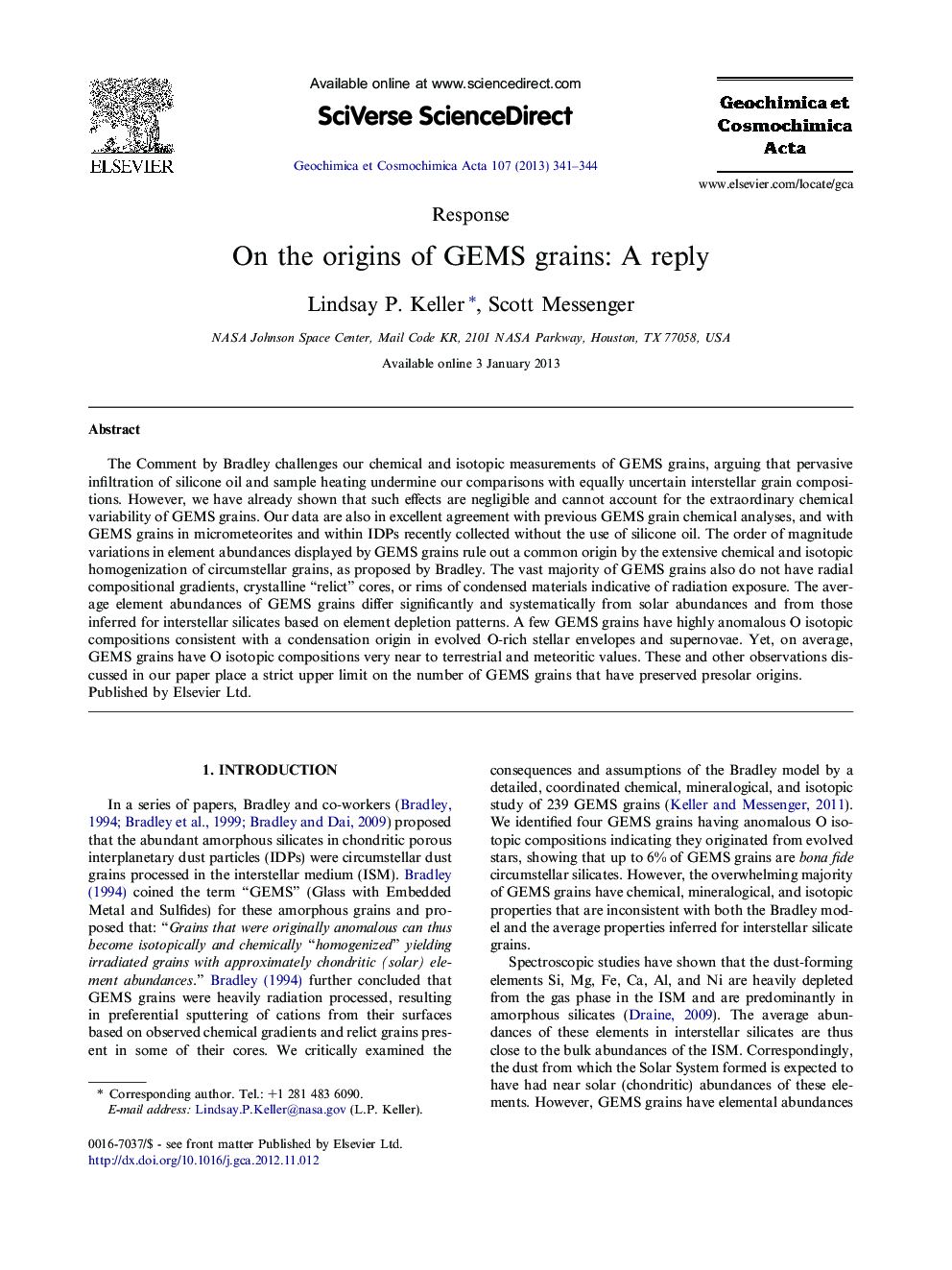| کد مقاله | کد نشریه | سال انتشار | مقاله انگلیسی | نسخه تمام متن |
|---|---|---|---|---|
| 4702477 | 1638050 | 2013 | 4 صفحه PDF | دانلود رایگان |

The Comment by Bradley challenges our chemical and isotopic measurements of GEMS grains, arguing that pervasive infiltration of silicone oil and sample heating undermine our comparisons with equally uncertain interstellar grain compositions. However, we have already shown that such effects are negligible and cannot account for the extraordinary chemical variability of GEMS grains. Our data are also in excellent agreement with previous GEMS grain chemical analyses, and with GEMS grains in micrometeorites and within IDPs recently collected without the use of silicone oil. The order of magnitude variations in element abundances displayed by GEMS grains rule out a common origin by the extensive chemical and isotopic homogenization of circumstellar grains, as proposed by Bradley. The vast majority of GEMS grains also do not have radial compositional gradients, crystalline “relict” cores, or rims of condensed materials indicative of radiation exposure. The average element abundances of GEMS grains differ significantly and systematically from solar abundances and from those inferred for interstellar silicates based on element depletion patterns. A few GEMS grains have highly anomalous O isotopic compositions consistent with a condensation origin in evolved O-rich stellar envelopes and supernovae. Yet, on average, GEMS grains have O isotopic compositions very near to terrestrial and meteoritic values. These and other observations discussed in our paper place a strict upper limit on the number of GEMS grains that have preserved presolar origins.
Journal: Geochimica et Cosmochimica Acta - Volume 107, 15 April 2013, Pages 341–344